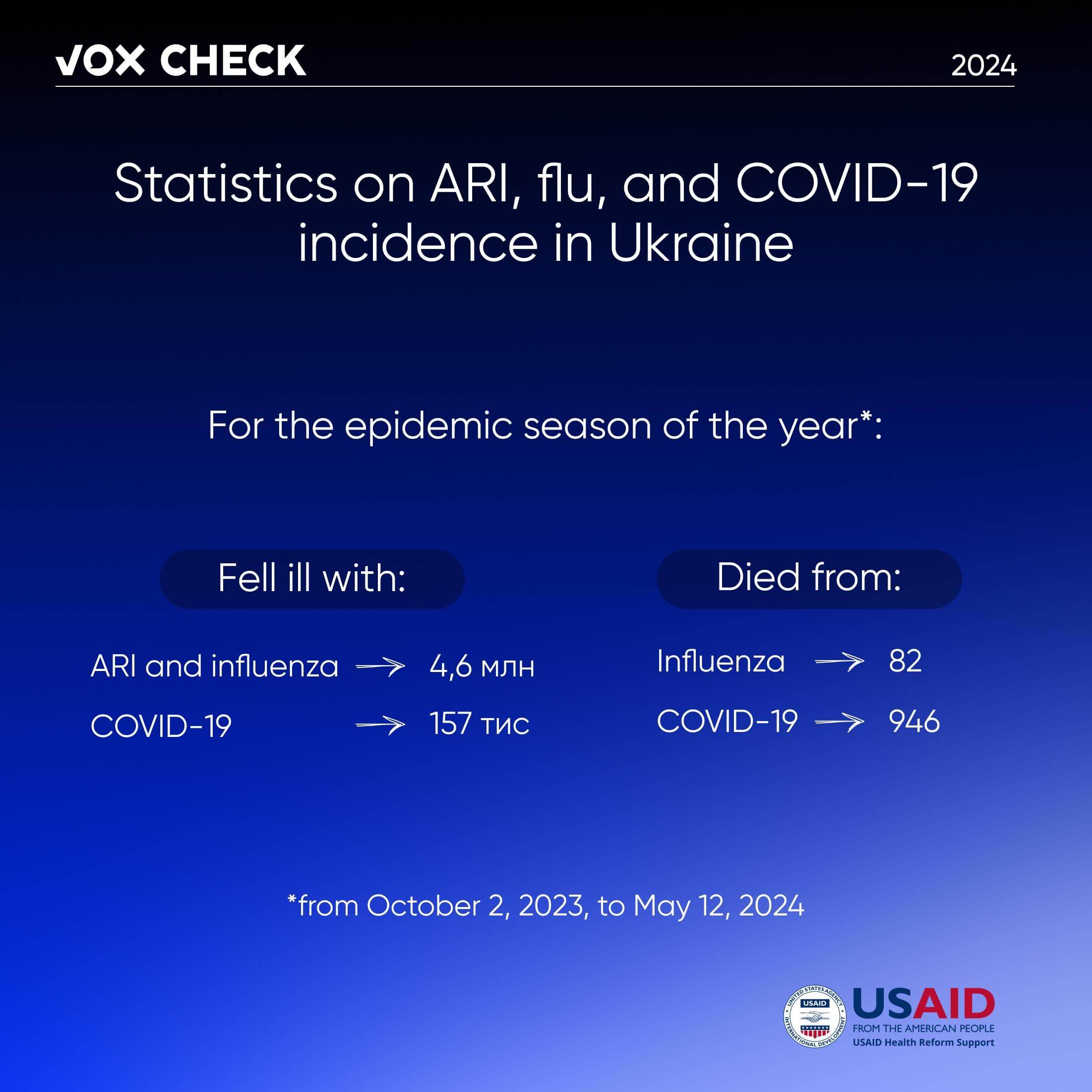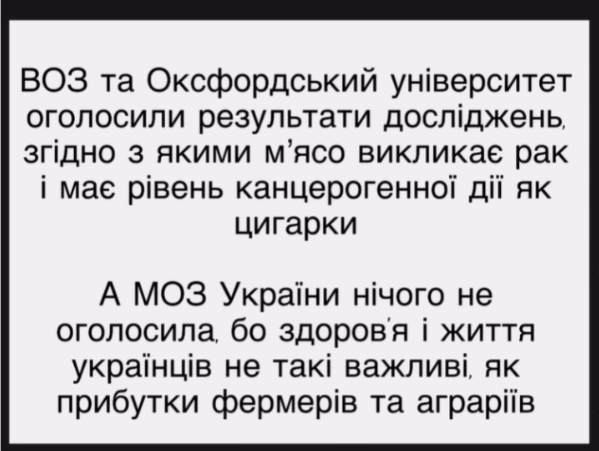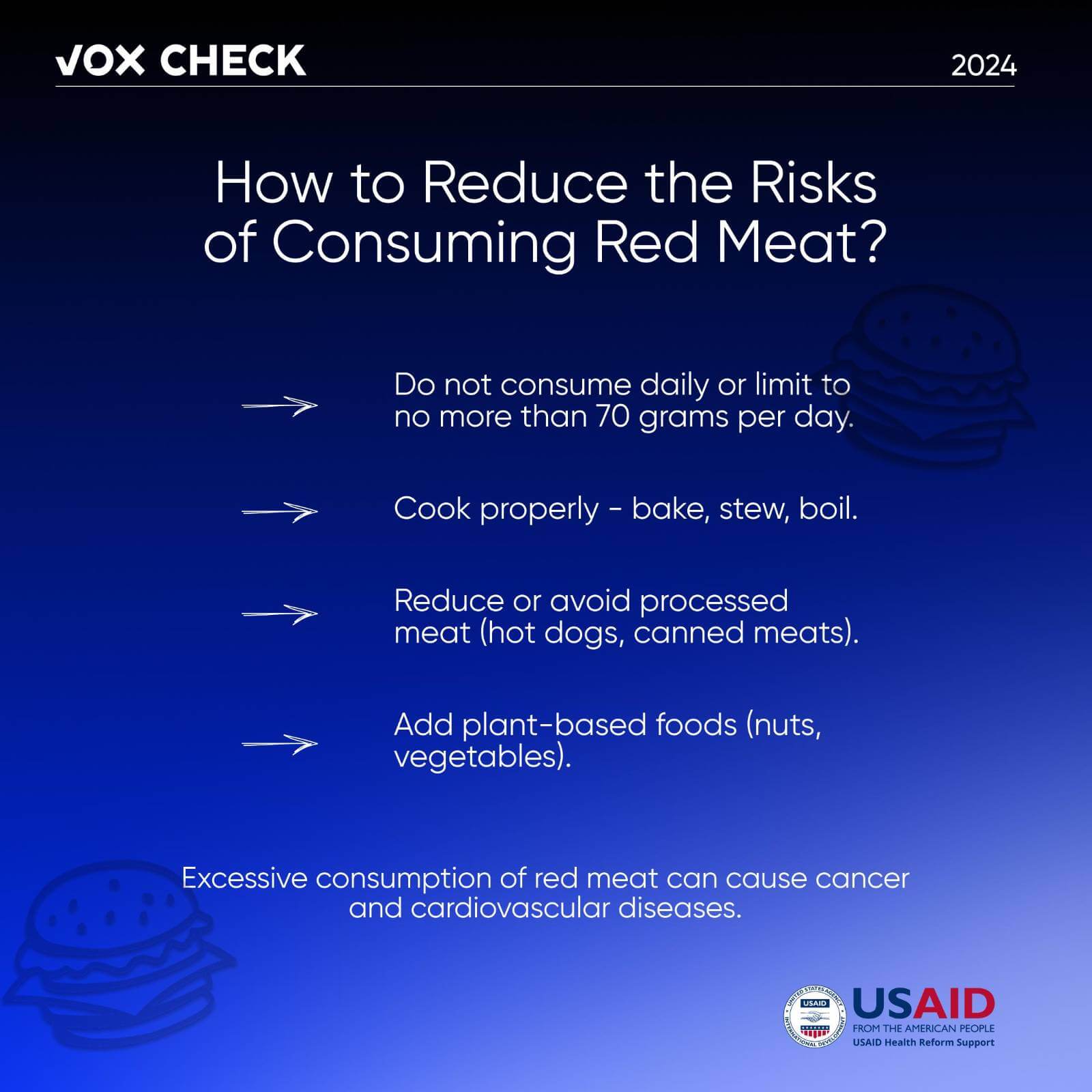Amid the shelling by the Russian army, Kremlin-aligned propagandists have once again started spreading panic among Ukrainians. According to their fabrications, some “Ukrainian media” allegedly reported that power and water supply disruptions will cause new epidemics in Ukraine. Ukrainian users also joined in discrediting the healthcare system, writing that the Ministry of Health of Ukraine “concealed” WHO data about the harm of meat from Ukrainians.
With the support of the USAID Health Reform Support project, VoxCheck analyzes and refutes public health narratives spread in the information space of Ukraine, Belarus, and russia on a weekly basis.
Disinformation: Power and water supply disruptions in Ukraine increase the risk of epidemics
Russian Telegram channels, citing unnamed Ukrainian media, are spreading information that due to power and water supply disruptions, increasing unsanitary conditions, and declining quality of healthcare in Ukraine, the risk of epidemics is rising. The posts also claim that the situation will be much worse in winter — due to electricity shortages, sewage pumps in cities may be turned off. This, they assert, will lead to the spread of infectious diseases such as typhus and plague.
What’s the reality?
These claims are not true. We were unable to find any publications in Ukrainian media that mentioned significant risks of infectious disease outbreaks due to temporary power outages. The first spread of these rumors was recorded in the anonymous Telegram channel “Legitimny” on May 29, which, according to the Security Service of Ukraine, is coordinated by Russian special services. This resource claims to provide insider information about the decisions of the Ukrainian authorities, citing unnamed sources. This Telegram channel has previously spread disinformation about Ukraine, including regarding medical reforms.
In June 2024, Chief State Sanitary Doctor Ihor Kuzin stated in an interview with “Ukrinform” that there are no outbreaks of measles, poliomyelitis, diphtheria, tetanus, flu, ARI, or COVID-19 in Ukraine. Moreover, Ukraine has a sufficient number of vaccines for these diseases. Information on disease spread, the number of infected, and vaccine supplies can be found on the website of the Public Health Center. Kuzin mentioned a few infectious diseases that are circulating in Ukraine, but they are not related to water or power outages.
During the 2023-2024 epidemic season, the Ministry of Health of Ukraine monitored all types of viruses present, including flu viruses and other respiratory diseases circulating in the country. The levels of ARI, flu, and COVID-19 during this epidemic season were 38% below the epidemic threshold calculated for Ukraine in mid-2023. The infographic provides detailed disease statistics.
Source: Ministry of Health of Ukraine
According to Kuzin, the reason fewer Ukrainians fell ill during the epidemic season is the low population density and the reduction in the number of contacts, as many institutions started working remotely.
He added that rabies remains an issue in Ukraine because oral vaccination of wild animals is complicated due to military actions. In case of a bite or even contact with the saliva of an infected animal, it is important to see a doctor.
Additionally, there is an increase in cases of botulism (severe food poisoning) in Ukraine, caused by violations of epidemiological requirements. This is particularly due to people buying products at informal markets, improperly preparing, or storing home-canned goods. There may also be an increase in viral hepatitis A infections, as it is a seasonal disease. There is also a threat of leptospirosis spreading because in some regions, due to martial law or other reasons, it is impossible to carry out deratization (elimination of rodents). Agricultural workers who work in the fields are at risk.
Furthermore, from June 1, the country will begin its annual intensified cholera surveillance. In all regions of Ukraine, water samples will be taken from bodies of water and tested weekly for cholera. According to the chief sanitary doctor, Ukraine has updated response algorithms for suspected cholera cases and has a sufficient number of diagnostic and treatment kits. A total of 188 medical facilities are contracted under the National Health Service of Ukraine package for emergency preparedness. These facilities allocate a certain number of beds for the hospitalization of patients with particularly dangerous infectious diseases (cholera, typhoid fever, etc.).
Neither Ihor Kuzin nor the Ministry of Health of Ukraine or the Public Health Center have mentioned any risks of typhus or plague. Additionally, the information that the sewage system will not function in winter due to power outages is false. Wastewater facilities are part of critical infrastructure and are prioritized for power supply.
Moreover, Russia has been attacking Ukraine’s energy facilities since October 2022. During this time, there have been no situations where entire cities were left without water supply and sewage systems. Oleksandr Kharchenko, Director of the Energy Research Center, reported that many mayors of Ukrainian cities have already started preparing for the winter of 2024-2025. Specifically, they are equipping water utility pumps and heating systems with generators. In previous issues, we have already debunked a similar fake claim that the sewage system would stop working due to power outages, supposedly causing typhus and plague outbreaks.
Disinformation: The Ministry of Health of Ukraine “hid” data about the harm of meat from Ukrainians
Information is being spread online that the World Health Organization (WHO) and Oxford University have announced the results of a study on meat — it causes cancer and has the same level of carcinogenic effect as cigarettes. At the same time, users claim that the Ministry of Health of Ukraine ignored these facts and did not inform Ukrainians about them.
Screenshot from a video shared by users
What’s the reality?
Останній аналіз щодо м’яса, яке може викликати рак, ВООЗ опублікувала спільно з Міжнародним агентством з дослідження раку ще у 2015 році. Однак користувачі соцмереж перекрутили інформацію. Насправді науковці з 10 різник країн досліджували ризики не всіх видів м’яса, а лише червоного — яловичини, свинини, баранини, конини та козлятини. А також оброблене м’ясо, яке готують за допомогою соління, в’ялення, ферментації тощо. У документі не згадують про необроблене біле м’ясо, наприклад, курки або індички.
The latest analysis regarding meat that may cause cancer was published by the WHO in collaboration with the International Agency for Research on Cancer back in 2015. However, social media users have distorted this information. In reality, scientists from 10 different countries studied the risks not of all types of meat, but only red meat — beef, pork, lamb, horse, and goat. They also studied processed meat, which is prepared through salting, curing, fermentation, etc. The document does not mention unprocessed white meat, such as chicken or turkey.
The report states that only an increase in the consumption of processed meat raises the risk of cancer. Among processed meats, hot dogs, ham, canned meats, and similar products are highlighted. If you consume 50-gram portions of such products daily, the risk of colorectal cancer (colon cancer) increases by 18%. Researchers did indeed classify processed meat in the first category of carcinogenic products, which includes tobacco products. However, this does not mean that smoking and processed meat are equally dangerous. The organization only identifies possible causes of cancer but does not assess the degree of risk each product poses to the body.
Regular red meat is classified in group 2A of carcinogens (probable carcinogens), partly because the research is based on “limited” evidence. This means that scientists have indeed observed some connection between red meat and cancer but do not rule out other causes of cancer.
Moreover, this is a general study that does not specify whether the degrees of risk differ for different age groups. The WHO itself notes that meat consumption has certain health benefits, but some institutions recommend that people with heart diseases limit their intake of red and processed meat.
Additionally, the Ministry of Health of Ukraine did not hide facts about the potential harm of meat. In 2018, it published an article about the consumption of red and processed meat. The material describes that red meat is a good source of iron, zinc, and amino acids. However, people who regularly consume large portions of red and processed meat are more often affected by cardiovascular diseases and cancer. In 2023, the Public Health Center also reported that red meat consumption increases the risk of colorectal cancer, stroke, ischemic heart disease, etc.
Source: Ministry of Health of Ukraine
To reduce the risks of these diseases, it is advisable to eat no more than 70 grams of red meat per day, to properly cook it (stew, bake, boil), and to add more plant-based foods to the diet. It is also recommended to prefer poultry, rabbit, veal, and fish.
This information piece was produced with the assistance of the United States Agency for International Development (USAID), provided on behalf of the people of the United States of America. This article’s content, which does not necessarily reflect the views of USAID, the United States Government, is the sole responsibility of Deloitte Consulting under contract #72012118C00001.
Attention
The authors do not work for, consult to, own shares in or receive funding from any company or organization that would benefit from this article, and have no relevant affiliations






